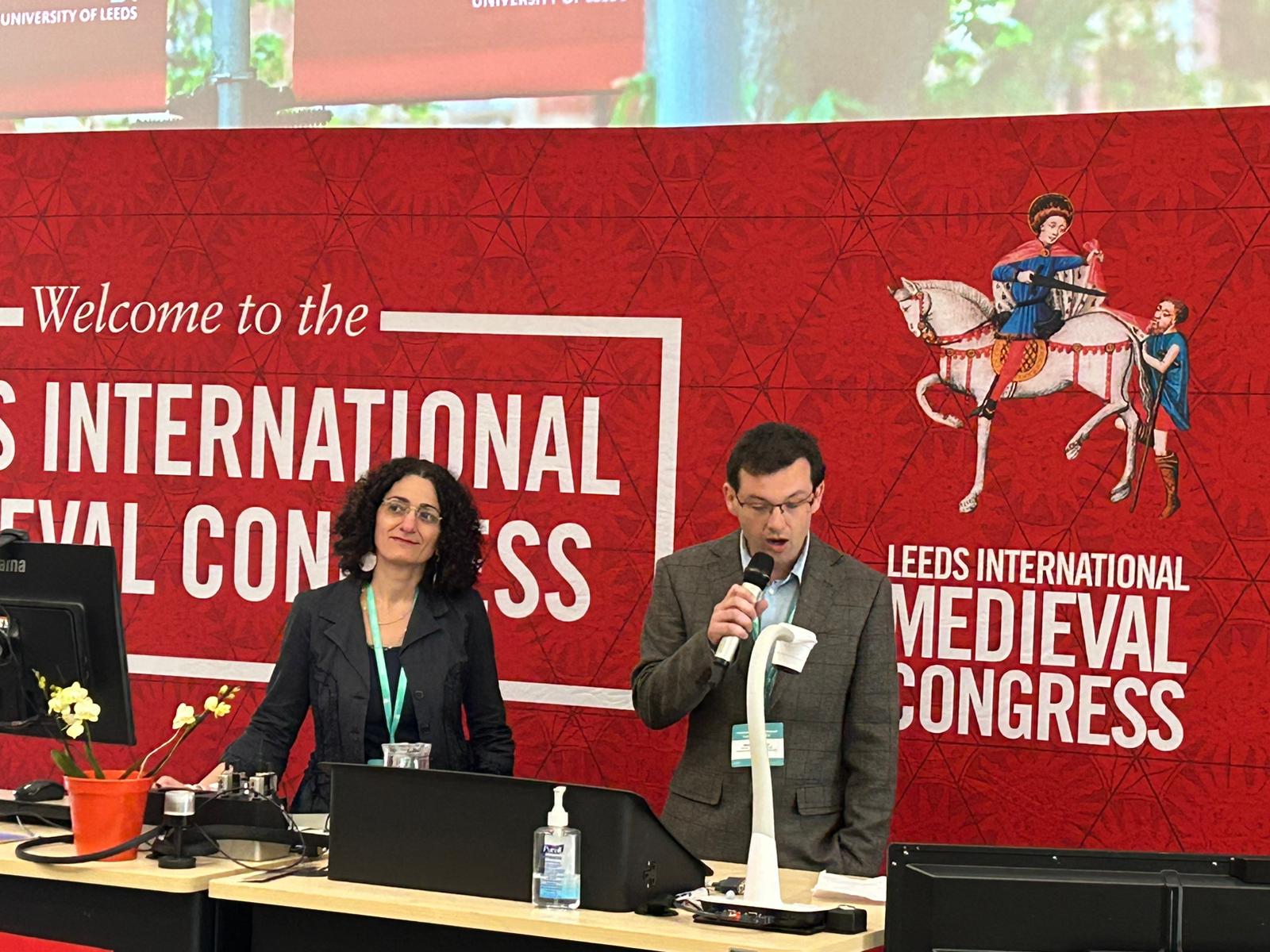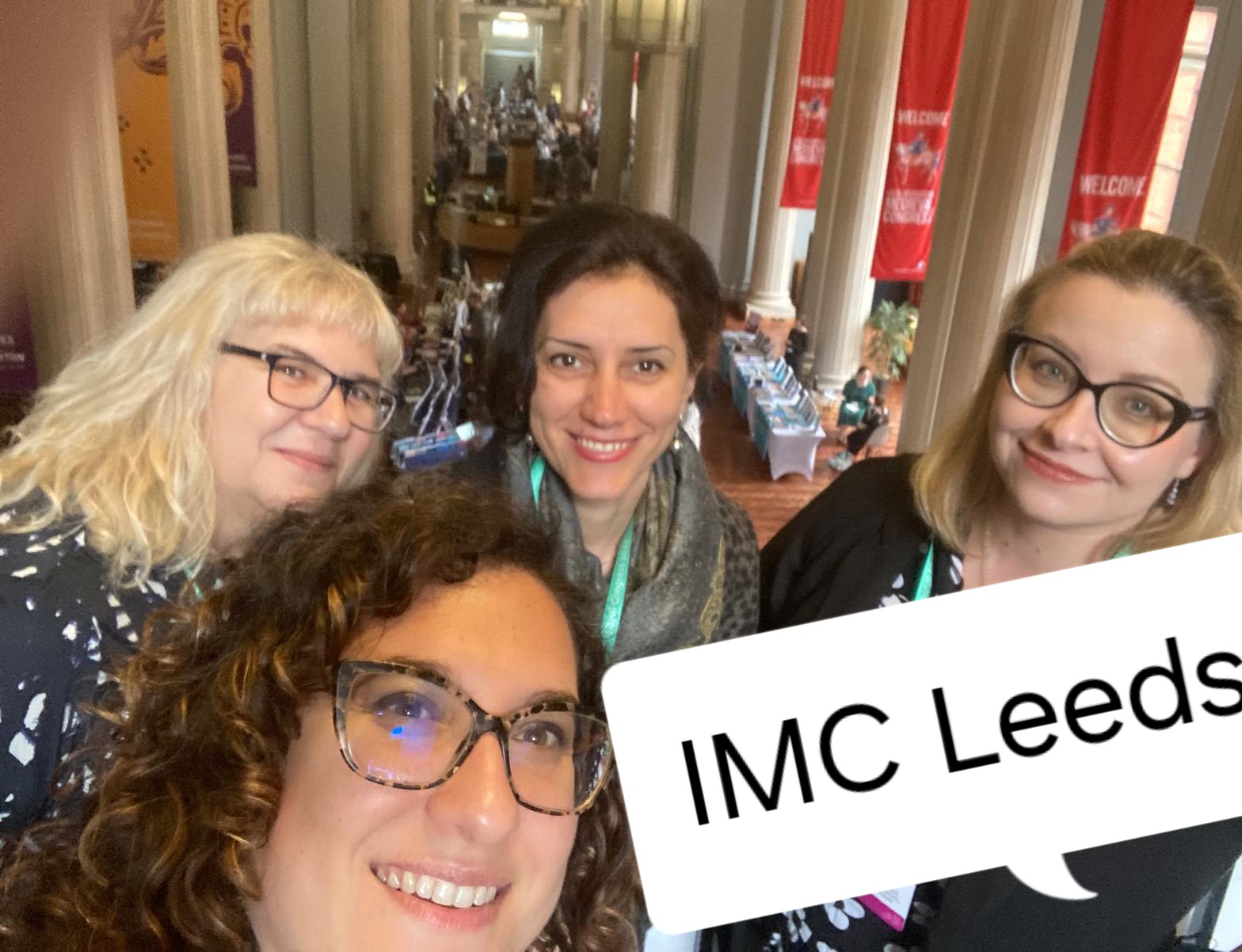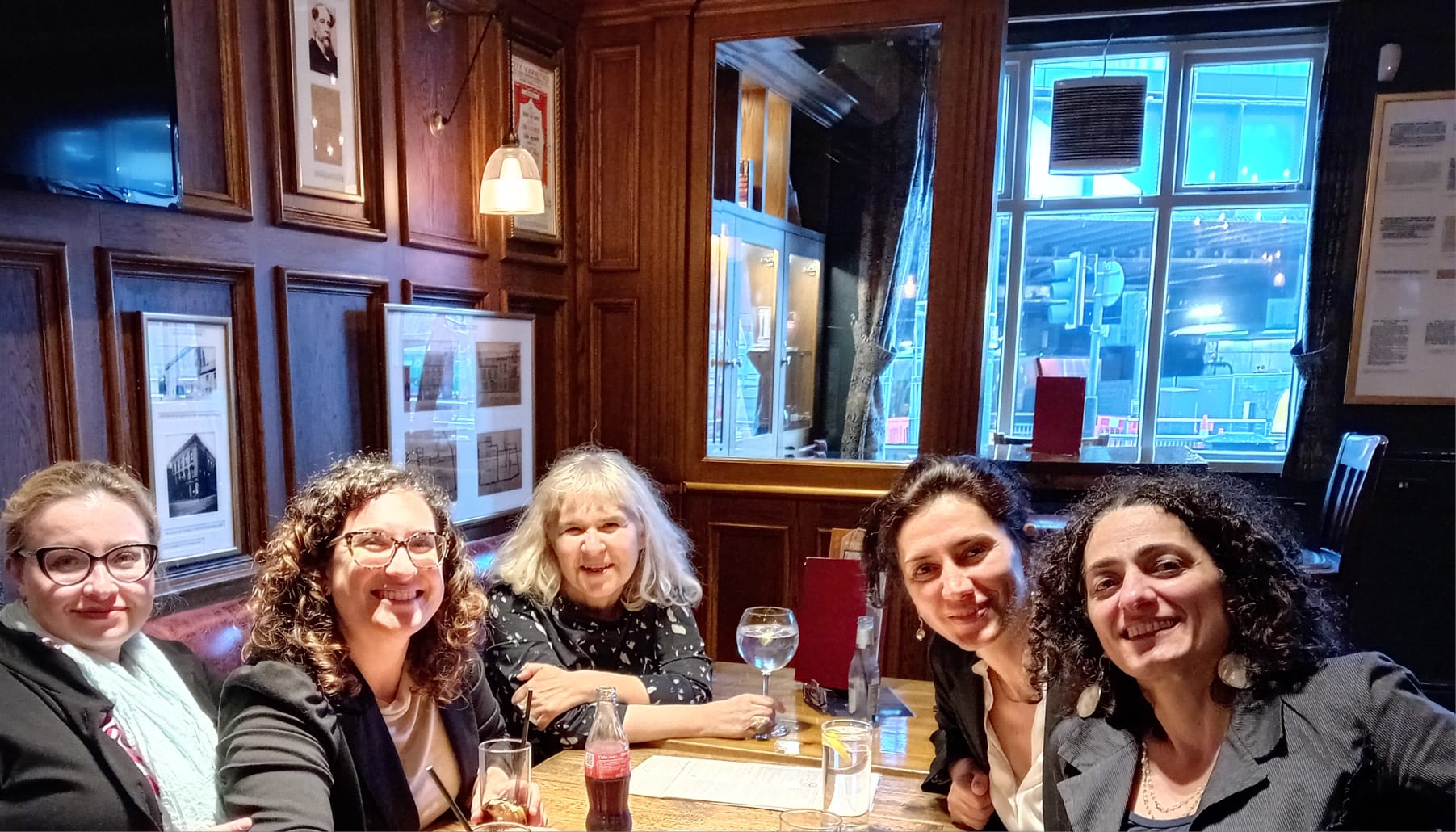ArmEn and HAI Mobility Members at the IMC Leeds 2024
Five ArmEn and HAI Mobility members took part in the International Medieval Congress at the University of Leeds on 3 July 2024, one of the world’s largest gatherings of medievalists. The theme of the 2024 Congress was Crisis.
Our P.I., Prof. Zaroui Pogossian, was invited to give a keynote lecture, once in a lifetime opportunity for her personally and an exciting outreach possibility for the Project ArmEn. Her paper entitled Crises and Response: Texts and Social Practices in Medieval Armenia attracted numerous listeners.

In her talk Prof. Pogossian explored textual responses to situations of perceived crisis in Armenian literature from the 5th to 15th centuries, and compared and contrasted these descriptions with what is known about changes in social practices. She focused in particular on apocalyptic texts and their use of episodes from the past to predict the future and provide explanations of disastrous events in the authors’ present. The texts Pogossian perused indicate that apocalyptic responses became particularly strong upon the Byzantine annexation of Armenian kingdoms and territories (starting in late 10th century), leading to a breakdown of old aristocratic families and the previously dominant social structures. Themes developed in this period were employed in subsequent contexts of socio-political turmoil, such as Seljuk or Mongol incursions. Despite their generally pessimistic tone, these texts also offered possible scenarios of revival, such as the renewal of an independent kingdom under the ‘glorious ancient’ dynasty of the Arsacids and a strong church leadership led by the off-spring of St Gregory the Illuminator.
Four team members (Hasmik Hovhannisyan, Elisa Pruno, Sara Scarpellini and Irene Tinti) presented in a multidisciplinary panel, also within the special thematic strand Crisis.

Panel 1319, titled Entanglements and Crisis between the Caucasus, Anatolia, and Mesopotamia: Written and Material Sources - Research Results of the ERC Project 'Armenia Entangled' was co-organised by Irene Tinti (ArmEn) and Sara Scarpellini (HAI Mobility) and chaired by Prof. Pogossian.
The panelists brought to bear their different methodological backgrounds and expertise in archaeology, numismatics, and philology respectively to address various reactions and responses to individual and/or collective crises in the CAM area in medieval times through the lens of material and textual sources.
Hasmik Hovhannisyan’s paper Crisis and Monetary Manipulation: Evidence from Byzantine Coin Finds in Armenia examined the topic of crisis through the lens of numismatic materials.
She particularly addressed the regulation of the money market, which was carried out through copper coins. The debasement and weight reduction of precious metal coins became widespread in the 11th century and reached its peak in the 12th. This process led to a change in the perceived value of copper coins. Hovhannisyan argued that the revalued copper coins implemented a microeconomic reform that had a major impact on stabilising the monetary system, thereby helping to avert a deeper crisis.
Elisa Pruno’s Transformation(s) in Periods of Crisis through the Lens of Pottery: Between the Caucasus, Anatolia, and Mesopotamia, 12th-14th Centuries focused on a few key-words: transformation, crisis, archaeology, and (pottery) in a very large area through the case-study of Dvin/Dabil (Armenia).
Thanks to the main properties of pottery (Ubiquity, Connectedness, Individuality, Range) it is possible to describe the pottery consumption in Dvin, which reflects economic prosperity or decline. This in turn may be mapped against wider political and social events. The paper argued that the analysis of specific stratigraphic contexts of Area 1000 in Dvin suggest that this area was used for domestic and cooking activities roughly between the 13th‐14th centuries, a period usually interpreted as one of abandonment or decline for the city.
Sara Scarpellini’s Saints in (a) Crisis: Challenges and Choices in Armenian Hagiographical Literature focused on the cult of saint George between the homeland and the diaspora(s).
In particular, her talk described the emergence of the cult of this saint in Armenian milieux in medieval times through literary and artistic evidence, and concluded with a case study: the choice of the patronage of saint George by a noble Armenian family, the Artsrunis, as a response to the crises and challenges of the 10th—11th centuries.
Finally, Irene Tinti’s Crisis, Controversies, Conversions: Traces of Latin-Armenian Interactions in 14th-Century Texts addressed the notion of crisis in the sense of a potential turning point, focusing on some 14th-century religious and intellectual responses to one prolonged crisis, namely, the repeated attempts of the Latin Church to extend its authority over the Apostolic Armenian Church.
Those responses were far from uniform, and encompassed acceptance, renegotiation, resilience, and resistance to change. As a philologist, Tinti focused on how these reactions are reflected in Armenian manuscript sources, considering both text(s) and paratext (notably colophons and marginal notes).
After the days’ hard work, the team enjoyed a relaxing dinner in town.

Last update
10.07.2024
